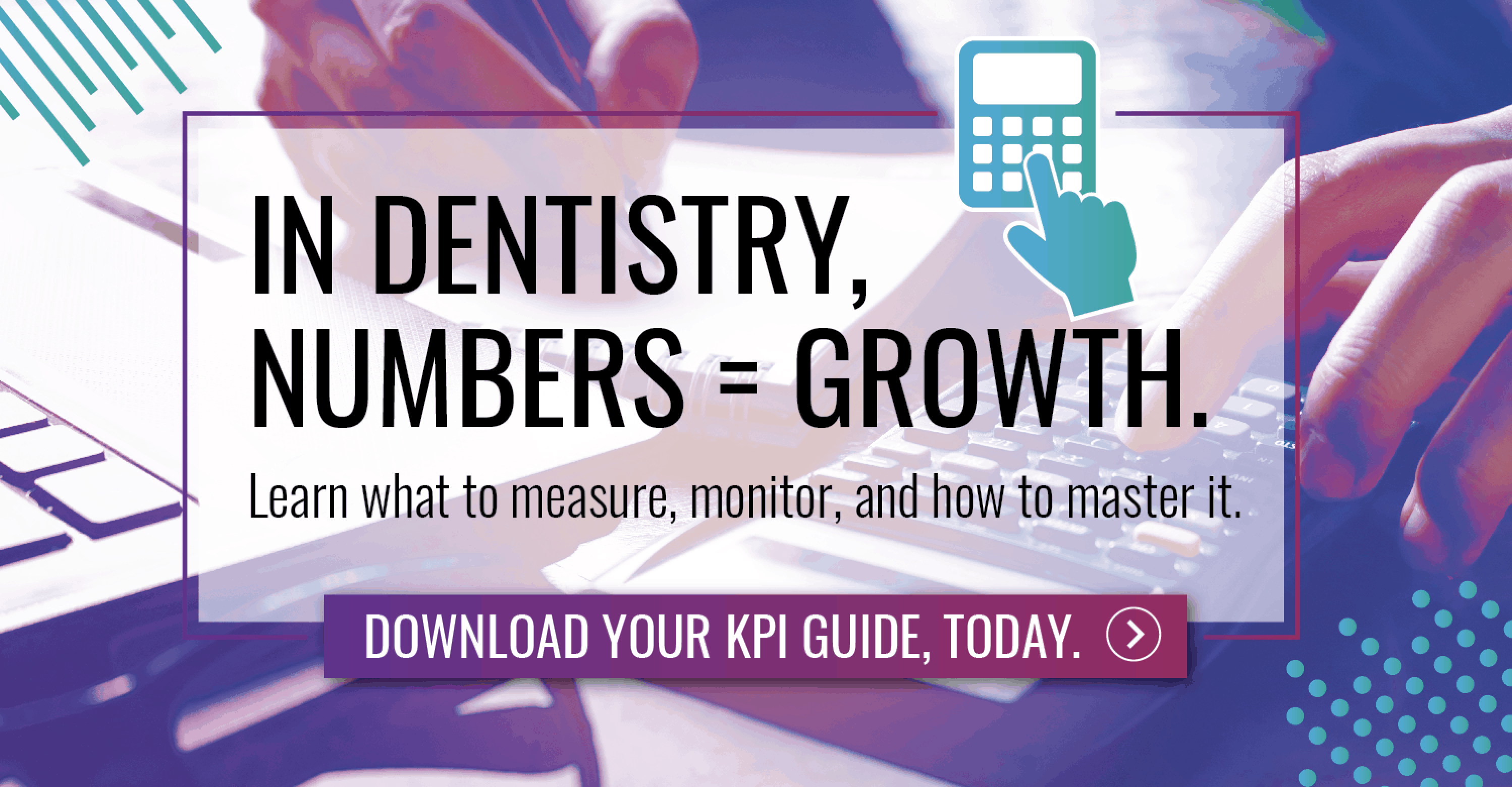Dental Metrics: Key KPIs To Measure a Thriving Practice

What is a dental metric and why does it matter to your marketing? Well, if you want to run a thriving private dental practice, providing high-quality dental care is not enough to keep your doors open. There are a few key performance indicators (KPIs) that you need to understand and monitor consistently. Monitoring these dental KPIs will allow you to pinpoint issues that are cutting your profits and make strategic improvements that improve your quality of care and your bottom line.
Key Quality Dental Metrics for Providers
While it’s always important to provide well-rounded care, modern practices need to measure performance in order to identify ways to boost growth. The key to thriving in the competitive field of dentistry lies in understanding and monitoring dental practice management metrics.
Dental metrics aren’t just numbers to check off your to-do list — tracking these analytics offers essential insights into the overall health of your business. Dental practice metrics highlight areas for improvement that can help you boost profitability and enhance the patient experience. For example, tracking dental metrics allows you to do everything from analyzing treatment quality to improving your employees’ working environment.
But what are the most important KPIs for dental practices? Let’s talk about critical KPIs and explain how each can be leveraged to help you make data-driven decisions and optimize your practice’s performance.
In order to improve your dental practice management, common metrics to track include:
Average Production Per Patient
Having a consistently full schedule sounds like a good thing, but if your practice is struggling financially, you are probably not paying close enough attention to your average production per patient, which is one of the top key dental metrics.
For example, if your practice sees an average of 25 patients per day, and your average production per day is $4,000, then your daily production per patient is $160. This average is fairly low, despite a decent number of patients in your chair every day. But don’t worry, there are steps that you can take to improve this number. Consider adding evaluations for cosmetic dentistry services and oral cancer screenings in your exams or scheduling multiple procedures into one visit.
But don’t worry, dental practice financial metrics can shed light on the steps you need to take to improve this number. In this example, consider adding evaluations for cosmetic dentistry services and oral cancer screenings in your exams or scheduling multiple procedures into one visit.
Average Production Per Team Member
Calculating your average production per team member can help you increase the efficacy of your scheduling. You can calculate this dental metric by dividing the monthly total production by the total number of days worked in that same month. This will give you an average production per day. Let’s look at an example of how you break this down by team member. We’re going to assume your daily production is $4,000. Your dental hygienist should account for 30% of your total production or $1,200 per day. This means that the doctor is responsible for producing the other 70%, which is $2,800. Knowing this ratio allows you to get a clear picture of how to schedule each day to reach your production goals.
Accounts Receivable Ratio
It is recommended to have your collections ratio above 95%. But if your practice isn’t reaching that number, the effect can mean much more than just loss of payment for procedures. It costs money to collect money, and the longer you let it sit, the more it “costs” you to collect. Essentially, not hitting that 95% target means you would be funding a collections effort, which includes paying the staff for their time when they could be doing something else designed to grow the practice. The cost of missed collections cuts into the practice’s profits, so keeping a close eye on it helps protect your practice against a loss.
Accounts Receivable Aging Detail
Patients and insurance are the two sources of accounts receivable. Running an aging report shows which accounts have outstanding balances and for how long. It is vital to limit, if not eliminate, accounts that are older than 30 days. Regularly running this report and reviewing it with your team can help you stay on top of your collections.
Hygiene Production to Total Production Ratio
Hygiene production is a vital part of the overall success of a practice, but it doesn’t produce as much revenue as things like cosmetic dentistry. However, if your dentist is spending time on hygiene and not on complex, higher-ticket procedures, then you are missing out on a lot of potential revenue. Knowing what percent of your total production is taken up by hygiene is imperative to keeping your practice profitable. According to Dental Economics, it is recommended to have hygiene take up 25%-35% of your practice’s total production.
Office Overhead
A good place to start in understanding office overhead is to generate a profit-and-loss statement. A profit-and-loss statement will break down the costs of things like labor, rent, utilities, and practice supplies. These categories are included in your overall office overhead. It is crucial to know this number and understand which of these expenses are fixed, like rent and utilities, and which are variable, like labor costs and inventory. Measuring these expenses and knowing what you have control over helps you set realistic goals for a thriving practice.
Dental Metrics Help You Make Data-Driven Decisions
When done correctly, dental KPI tracking can transform your practice. Once you have this information at your fingertips, you will be able to develop data-driven strategies that improve the performance of your practice. Monitoring these dental KPI benchmarks over time ensures that your practice is growing consistently. Start using dental metrics and making informed choices about the future of your practice now. Your patients will see the difference, too.
If you’d like to see consistent growth in these dental practice KPIs but aren’t sure where to start, let’s connect. We’d love to talk with you about helping your practice grow.
Want to learn more about what key metrics your practice should be tracking? Download our free guide, Transform Your Dental Practice by Tracking These 8 KPIs, today!

